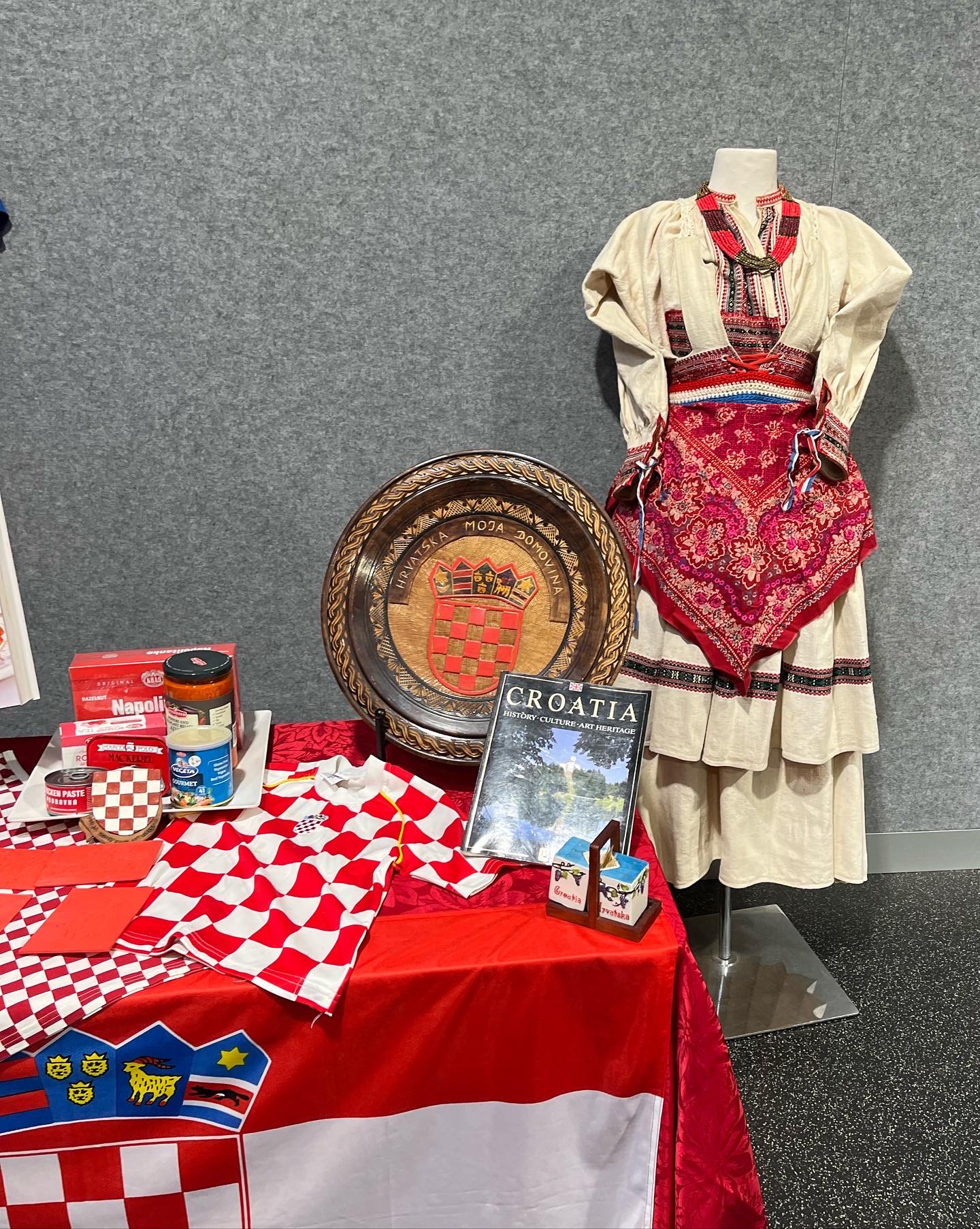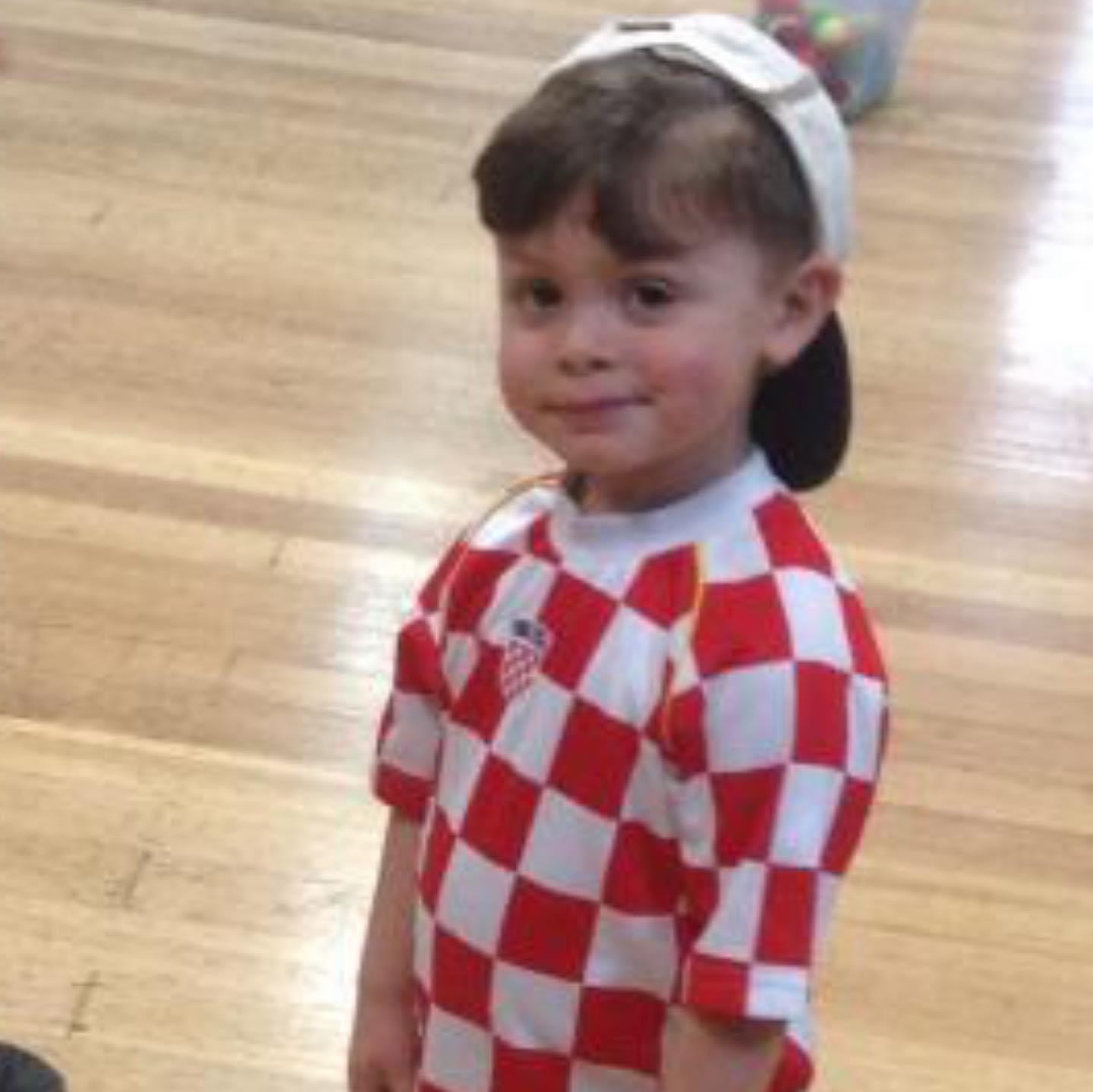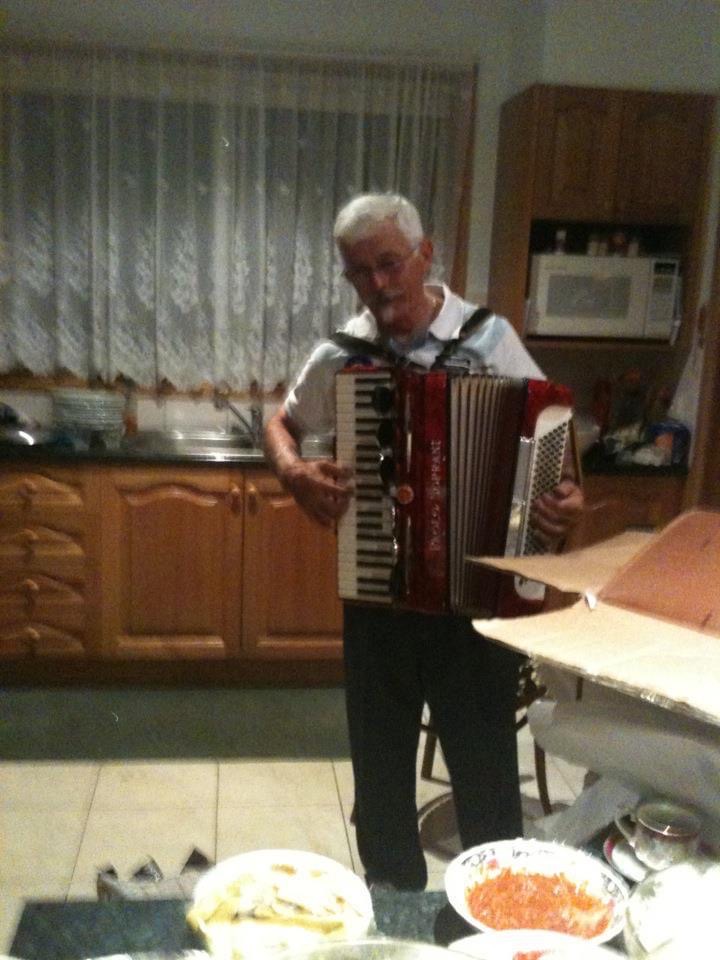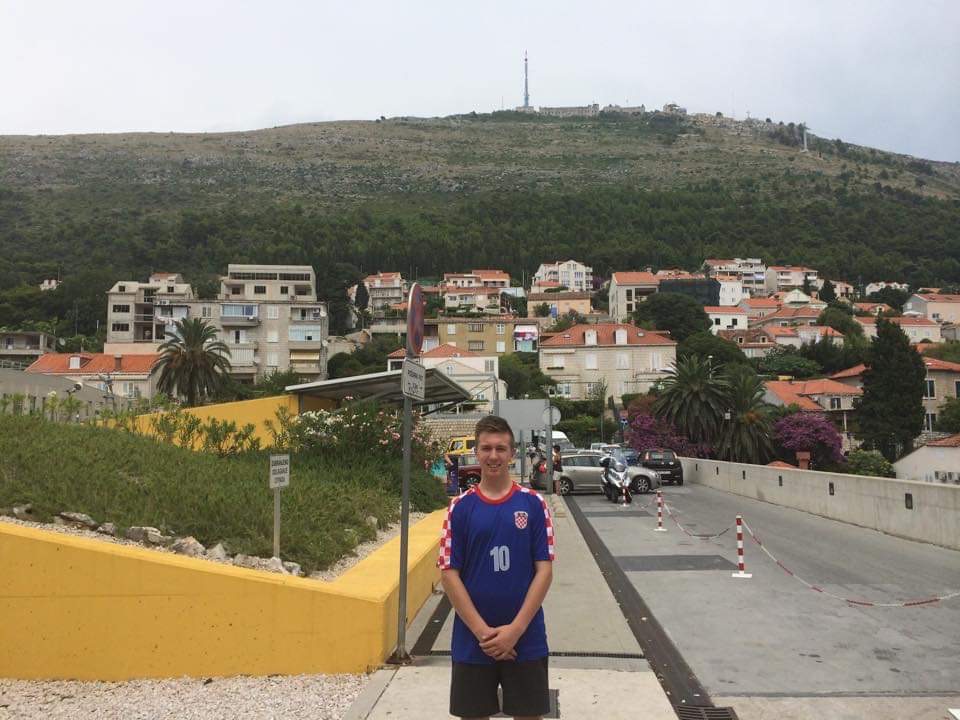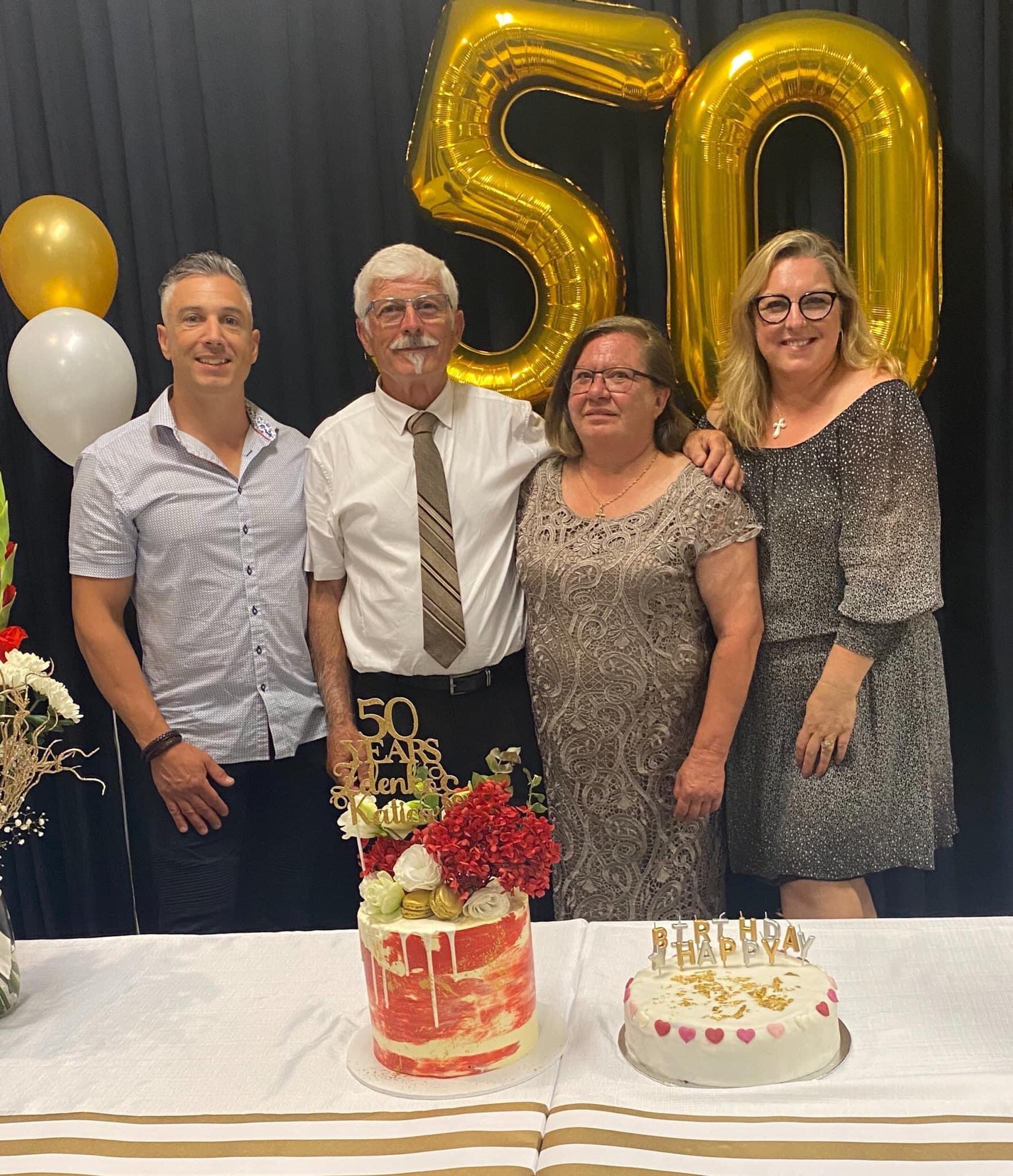Croatia Floods: Worst Seems to be Over, Situation Under Control
May 18, 2023 - The fight against the Croatia floods is ongoing, but the situation seems to be under control. During the night, it was the most difficult in Karlovac and Hrvatska Kostajnica, where a state of emergency is in effect for the rivers Korana, Kupa, and Una, said Tomislav Novosel from the Main Center for Flood Defense in Croatia.
As Index writes, prime Minister Andrej Plenković will visit Karlovac and hold a working meeting with ministers, the local community, and competent services on further activities of all components of the homeland security and civil protection system to help the population and prevent damage due to rising water levels. After the meeting, the Civil Protection Headquarters will make statements to the media and tour the surrounding areas.
The Directorate of Civil Protection announced last night that the situation in Karlovac County is serious but under control. All services are constantly on the ground, building embankments, filling additional sandbags, and distributing them to threatened areas.
The peak of the water wave was around midnight for Kupa and Korana and around 10, 11 pm for Una.
The wave in Karlovac reached 840 cm in 2 hours, the third-largest water wave since 1926. The first one was in 1939, only about 20 cm higher than this one. The Una reached 499 cm in Hrvatska Kostajnica; it is currently declining and has dropped by about 20 cm compared to midnight and its highest water wave, Novosel told Hrvatski radio.
"In the next 24 hours, we expect Kupa and Korana in Karlovac to drop by about half a meter. The weather is calming down today and tomorrow, which will help the situation to calm down on the field as well", he added.
The water level is decreasing in Hrvatska Kostajnica
The mayor of Hrvatska Kostajnica, Dalibor Bišćan, said that the water levels in the area are somewhat decreasing, but not the bypass waters, and they continue to work.
"After the extraordinary measures, there was a state of emergency caused by the high water levels, seepage through the ground, and bypass water that came into the streets, but what we successfully did in the fight itself was to reduce the water level in the streets compared to the water level in the river Una," said Bišćan for Croatian Radio.
Throughout the night, crews from volunteer firefighting companies, the Croatian Army, and subcontractors of Croatian Waters worked on replenishment, that is, monitoring the operation of the pumps themselves. At the moment, we have a slight decrease in the water level, he added.
We can say, pointed out Bišćan, "there is no tendency for these bypass waters to decrease, so we continue to work so that there is no increase again in the streets because we see that heavy rainfall causes a slight accumulation, that is, seepage, and a further inflow of water, only not from the river, but from the surrounding hills or higher terrain," said the mayor of Hrvatska Kostajnica.
He noted that he hopes the worst is over but added, "This is still half a meter higher than the situation that we can call extraordinary measures, so we have several days of fighting and maintenance ahead of us because the drop is 1 cm".
For more, make sure to check out our dedicated News section.
Karlovac Among First Cities in Europe With Low-Carbon District
January the 10th, 2023 - The Croatian city of Karlovac (close to Zagreb) has become one of the very first cities in all of Europe to boast an impressive low-carbon district of its own.
As Darko Bicak/Poslovni Dnevnik writes, to be more specific, the Regional Energy Agency of Northwest Croatia (REGEA) was one of the partners in the Interreg Europe LC DISTRICTS project, which gave life to Karlovac becoming one of the first cities in Europe of this kind.
The goal of the project was to intervene in the selected strategic document in order to take a step towards the decarbonisation of city districts as we move towards a greener future. As was pointed out, in partnership with the City of Karlovac, the aforementioned agency managed to tale a significant step forward in the overall decarbonisation process by dealing with energy and climate elements in spatial plans.
A brave political decision
"In cooperation with the cities of Northwestern Croatia, with the City of Karlovac as a leader, we recognised spatial plans as one of the key policy documents that can be a trigger or a brake on the decarbonisation of neighbourhoods and cities. Spatial plans are in firmly the hands of local and regional authorities and can be considered as a tool to encourage this transition. Together with the city officials, we decided to develop a plan for a district that will be sustainable, energy efficient and resistant to climate change," they stated from REGEA, headed by director Julije Domac, adding that choosing to head down this particular path was a brave political decision because it meant a sharp change in the current practice. REGEA made all the necessary analyses and suggested how the measures that already existed in the action plans for energy sustainable development and adaptation to climate change (SECAP) of the City of Karlovac should be implemented in the overall spatial plan.
The pilot project itself was designed for the area of the Luscic Urban Development Plan zone. After the initial analyses, REGEA proposed a series of measures to ensure the low-carbon development of the district and its resistance to the effects of climate change to the local powers that be in Karlovac. A process of change followed, in which all city offices, city-owned companies, the academic and business community, non-governmental organisations and individuals were involved.
The result of the process was a spatial plan that was approved by the City Council and which, as the first in all of Croatia, and probably among the first in Europe, paves the way for the sustainability and resistance of a neighbourhood to the constant threat of climate change.
Some of the key features of the wider Karlovac plan are a complete ban on fossil fuels for heating purposes - no natural gas network is foreseen, energy for heating will only come from district heating or heat pumps (which is currently above the national standard in the use of renewable energy sources), and nature-based solutions regarding adaptation to climate change will be encouraged. All of this was done by REGEA in cooperation with the City of Karlovac as part of the wider European LC District project.
Cooperation with ministries
Participation in the LC Districts project enabled the REGEA team to gain insight into good practices from Sweden, Italy, Spain and the Czech Republic. Karlovac, led by Mayor Damir Mandic, therefore represents a pioneering venture here in the Republic of Croatia and will serve as an example of decarbonisation for other city districts throughout the country.
REGEA is now working with the Ministry of Economy and Sustainable Development and the Ministry of Spatial Planning and Construction to help them implement the steps learned during this process into strategic documents with the aim of facilitating the energy transition, adapting to the effects of climate change and increasing the resilience of local or regional self-government units.
"Even though this may only be a small step at the level of the overall work which lies ahead of us, it's certainly a big one, as it represents the first successful implementation of decarbonisation in a spatial plan", they concluded from REGEA.
For more, make sure to check out our dedicated news section.
Karlovac Soon to Use New Hot Water Source for Heating
September the 19th, 2022 - The City of Karlovac near Zagreb will soon be using a new hot water source for its heating needs as worries of energy crises this winter continue to plague many.
As Darko Bicak/Poslovni Dnevnik writes, in the wake of the energy crisis and the fear of what winter is set to bring in terms of heating issues, any investment in renewable energy sources is gaining additional importance, especially if it is a public partnership that will bring people some peace in terms of the price and security of their energy supply.
The most recent example is the City of Karlovac, where, at the end of last week, Geotermika's project was first presented. This company has withdrawn the necessary funds that will enable a significant step in the connection of the Karlovac's heating system to heating from its own geothermal sources.
As the director of Geotermika, Vlatko Kovacic presented the project to the city administration. A massive 5.6 million kuna came to the fore through the "Using geothermal energy for heating purposes in the City of Karlovac" project. The generous donor is the Norwegian fund EEA, and the project partner in addition to the City of Karlovac is ISOR Island.
The share of grants stands at almost 67 percent, while the City of Karlovac will co-finance the project with 1.9 million kuna. "We're starting to create a pilot project with the aim of increasing the capacity for the production and use of thermal energy from geothermal energy in the area of the City of Karlovac. The end goal is to arrange the well work space to house the drilling rig and the pit for production testing of the KAGT-1 well, which will bring Karlovac even closer to increased energy production from geothermal energy and install capacities for the use of energy from said geothermal energy," explained Kovacic.
The introduction of RES will contribute to the security and diversification of the Karlovac's overall energy supply, the share of energy produced from renewable sources will increase and enable the successful transformation of the city into an ecologically sustainable area," stated Kovacic.
For more, make sure to check out our dedicated lifestyle section.
Australian-Croatian Boy Wins School Project with Croatia Presentation
July 2, 2022 - An 11-year-old Australian-Croatian boy won first place in a Travel Expo school project by presenting Croatian history, culture, traditions, and folklore to his teachers and classmates. TCN had the privilege to talk with his mother, Irena, about their Croatian ancestry.
Arkie Kokoris, an 11-year-old boy from Melbourne, Australia, won first place in a Travel Expo school project, which consisted of presenting information about a country, where he and his 2 colleagues chose Croatia due to his families ties. They were tasked with presenting a Travel Expo stand, encouraging people to visit their chosen country, and were asked to provide information on the natural attractions, climate, tourist destinations, cuisine, culture, history, wildlife, and more.
Arkie's presentation included local products, flags, shirts, traditional costumes, and more. (Photo: Irena Kokoris)
Arkie attends a private Christian school and he’s currently in year six. He included some fact sheets about Croatia and a hand-drawn map which they placed on the wall and a slideshow presentation on interesting facts and the history and culture of Croatia. They included historical buildings and landmarks, nature parks, food, and animals. For the visual display, they included the flag, various souvenirs from Croatia, traditional food items, some sporting memorabilia including a soccer jersey from Dinamo, an authentic Croatian costume from Zagreb, a cookbook, and another book on famous landmarks and buildings in Croatia. One of the students has a 3D printer and made lithographs of famous buildings which would be placed in front of a torch to show the image.
A smaller Arkie with a Croatian football shirt. (Photo: Irena Kokoris)
His presentation obtained first place after a voting process, and a humble first prize of a certificate and a round of applause followed. His fellow classmates had to vote on their favourite display and Croatia won by a landslide.
Total Croatia News interviewed his mother, Irena Kokoris, who, in addition to being great support of her son in the process of designing and executing the project, proudly shared the achievement on social media. Irena’s heritage story is, perhaps, one of the most interesting and touching I’ve read, and I’m really glad that you can learn from it through her own words.
My parents are from the region of Zumberak, Karlovac. They grew up on farms, tending to animals and the land as well as attending school and doing their homework by candlelight. They left in 1971 for Australia as a young and newly married couple, hoping to start a new life together with opportunities for their future children. Upon arrival, they were met by only one relative.

Irena with her father Zdenko Rados, her mother Katica Rados, and her younger brother, Marko. (Family album)
They spent some time in an immigration camp before finding rental accommodation and finding work. They both worked full-time jobs their whole working lives, as well as raising 2 children. They have 6 grandchildren. My father passed away suddenly last year at the age of 69 leaving a large hole in our family. My mother made sure to include the grb on his gravestone, he was a very proud Croat.
Irena's father, Zdenko. (Family album)
What kind of Croatian traditions and customs did you have at home when growing up? Were there Croatian recipes and food as well?
We always celebrated the Catholic holidays with the family, having a pig cooked on the spit, lots of sides, and lots of beer and wine. My parents had many family and friends of Croatian heritage and we always had some kind of gathering to attend on the weekends. Dinner dances, weddings, holy communion or confirmation, birthdays, etc. Mum taught me how to make sarma, gulas, cevapi, kiseli kupus, as well as many other traditional foods. There would be sunka, slanina, kobasice, wine, and sometimes rakija as the seasons allowed.
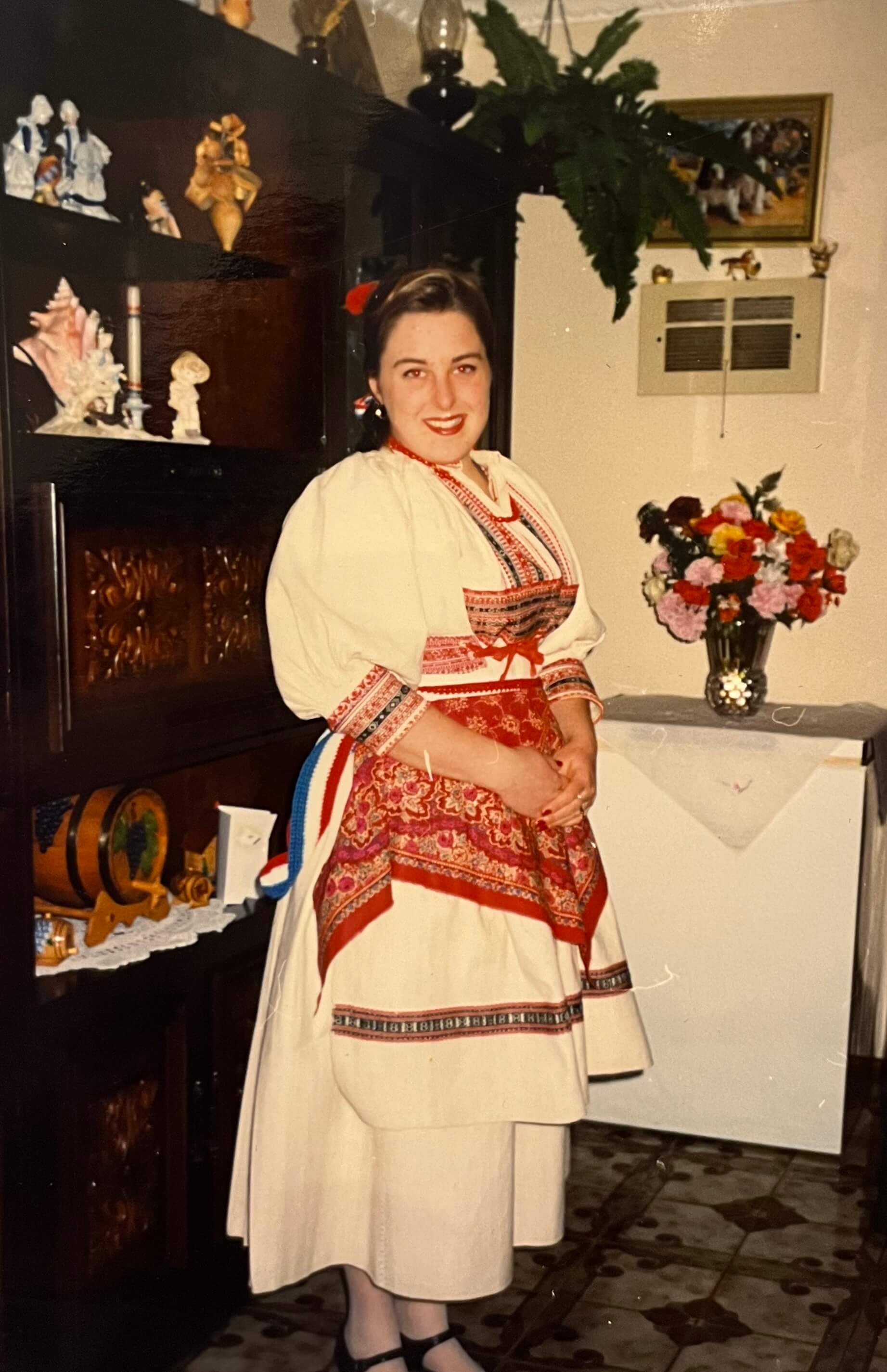
Irena with a Croatian traditional costume. (Family album)
Was there a Croatian community where you grew up? Have you been a part of it? How?
We’re a part of the Hrvatsko Vinarsko Drustvo, Mladi Hrvati Folklore, the Croatian Golf Club, Croatian Saturday School, our church was Sv Nikola Tavelic, and there were many dinner dances organised by the church as well as New Years Eve parties. I danced for many years, into my early 20s, my brother also attended for a few years. Being part of the dancing group, attending many events was some of the happiest memories of my teenage years. One year (around 1990), a large group of Croatian singers and the President of Croatia Stipe Mesic visited the Melbourne Knights soccer club and we sang the Australian National Anthem and danced for them.
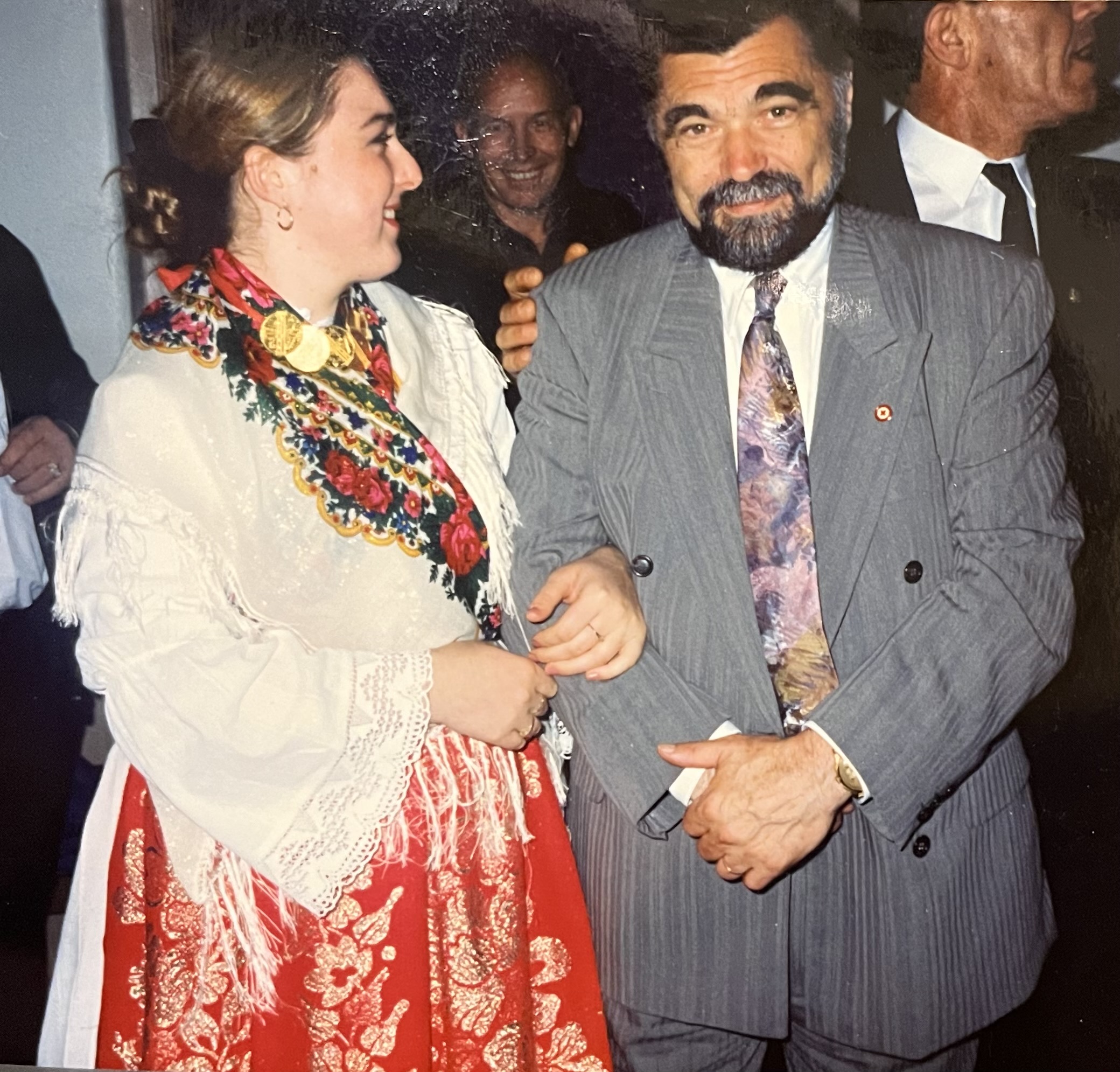
Irena with former Croatian president, Stjepan Mesic. (Family album)
Have you visited Croatia? What was your impression?
Visited in 1985 as a teenager, spent most of the time in the village, but travelled to Slovenia, Rijeka, Zagreb and Karlovac. Visited Plitvice and a few other locations. Spent a lot of time in the forest and on the farm. Picked cherries from the fields and mushrooms from the forest. My parents went back to Croatia in 2014 and took my oldest son Arthur with them for 6 weeks.
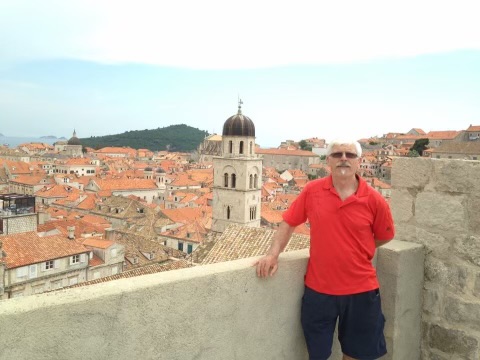
Irena's father Zdenko in 2014 trip to Dubrovnik. (Family album)
They travelled more extensively that time and saw more sights, including Dubrovnik and Split and my son really enjoyed his time there. My dream is to return for a visit and bring my family to see the country of their mother’s heritage. Croatia is such a beautiful country and I feel strong ties. We were planning to go in 2021, but the pandemic changed our plans! My children are old enough now to travel and it is definitely on my bucket list!
Irena's older son, Arthur, went to visit Croatia with his grandparents. (Family album)
What makes your connection to Croatia so strong and special? What is it that you like the most about your Croatian heritage?
Growing up hearing my parents talk about their homeland with such fondness (apart from the hardship). They were mindful to pass on their love and pride in their country to us. We attended Croatian school on Saturdays for many years, learning history, geography and language. I remember our teacher didn’t know any English, so we had to speak Croatian the whole time! Having visited there in 1985 as a young girl, I have such fond memories and loved the land and the carefree attitude of its people.
The Rados family during the 50th year of marriage celebration between Zdenko and Katica. (Family album)
I love that I am of Croatian heritage, I am proud of it and proud that I had the opportunity to participate in the Australian Croatian community for many years in my life. After I married, I became less involved and moved into becoming a mother and wife – of which I am also very proud.
In which ways do you try to teach your children to embrace their Croatian heritage?
I always remind them that despite their surname – they are half Croatian! They have all shown an interest at some stage in learning the language and have picked up a little over the years. They love all the Croatian cuisine – especially the kolace! I involve them in learning some recipes such as punjene paprike, cevapi and raznjici. We have attended a few dinner dances over the years and I think my older two may attend Croktoberfest this year!
Irena's children are of both Greek and Croatian descent. (Family album)
What’s your favorite thing about Croatia?
My favourite thing has got to be the culture around folklore dancing! I think it is beautiful, elegant and regal. The costumes are divine and the music is amazing. I miss dancing so much but am so glad I was a part of it for so long.

Irena dancing with a friend. (Family album)
Thank you Irena for sharing your story with us!
For more news about the Croatian diaspora, visit our dedicated section.
Eight Must-Visit Croatian Castles, Fortress, and Citadels
June 23, 2022 - In this small guide to Croatian castles, fortresses, and citadels you will find some of the many walled wonders that you can explore in the country, to add a bit of history to your vacation.
It is well known why Croatia is one of the countries where HBO producers set their sights on adapting the acclaimed and popular Game of Thrones novel. Although Croatia is widely known for its Illyrian and Roman heritage thanks to its palaces and amphitheater, many of its castles and fortresses help to display a more medieval side of the country.
For those who have a particular interest in the feudal and medieval history of Croatia, here we review some of the main Croatian castles, fortresses, and citadels that are worth visiting.
Pula Castle
The Pula Castle is a star-shaped castle with four bastions that was built in 1630 to protect the city and its harbor because of its great significance in maritime trade in the North Adriatic. The Venetians commissioned the building of the Castle to the French military architect Antoine de Ville. This was most probably the site of an earlier fortress dating from the pre-Roman and Roman periods. Today the Castle houses the Historical Museum of Istria.
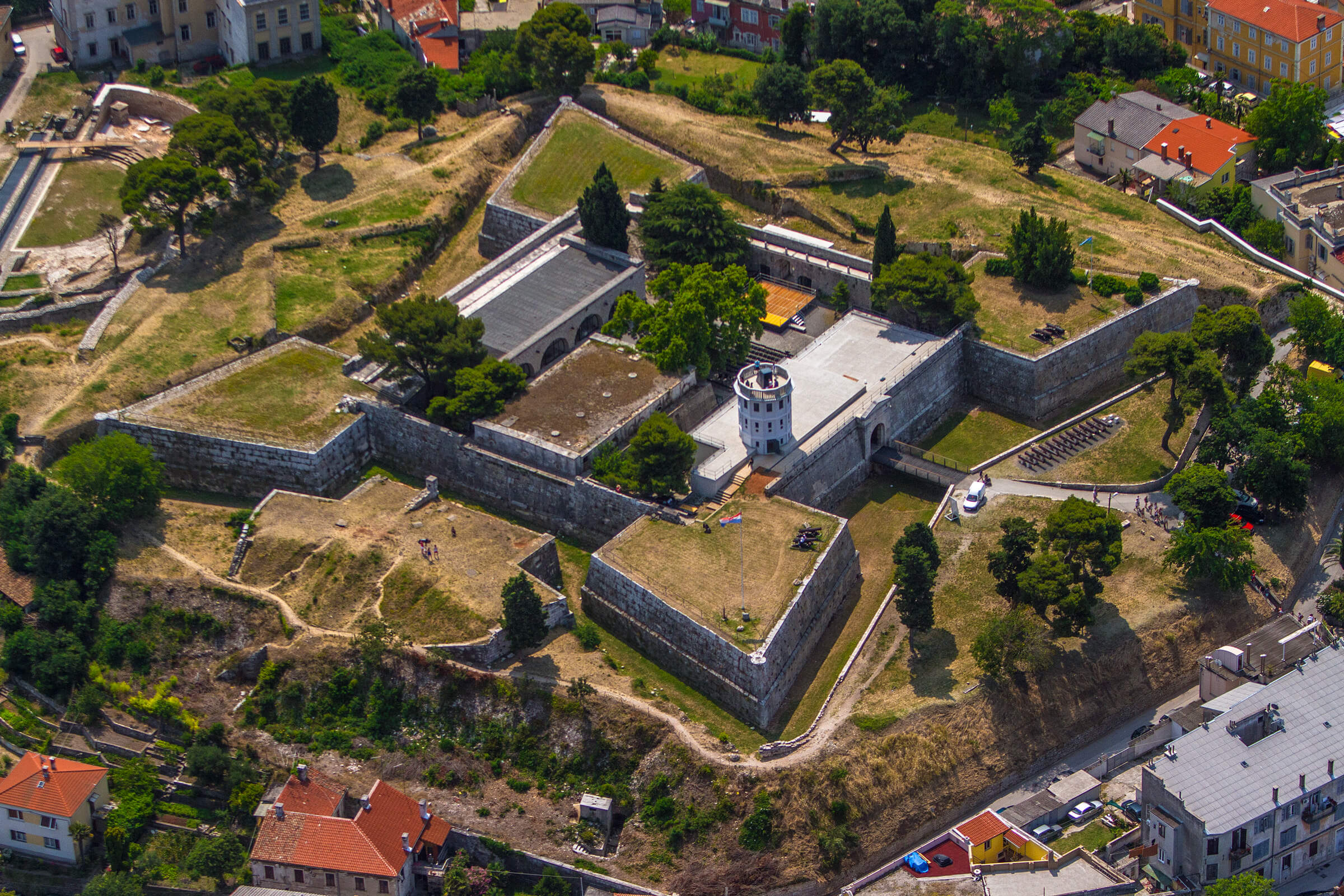
Image: Pula Tourist Board
Trsat Castle
The Trsat Castle served as a lookout on a hill 138 meters above sea level, now overlooking the city of Rijeka. It was mentioned as a parochial center for the first time in 1288. At this same site, there was a Liburnian observation post from prehistoric times, used for monitoring the roads leading from the hinterland to the coast. This location served well for the Romans to establish their defense system, the so-called Liburnian limes, whose starting point was the Tarsatica fortress town, located now in Rijeka's Old Town.
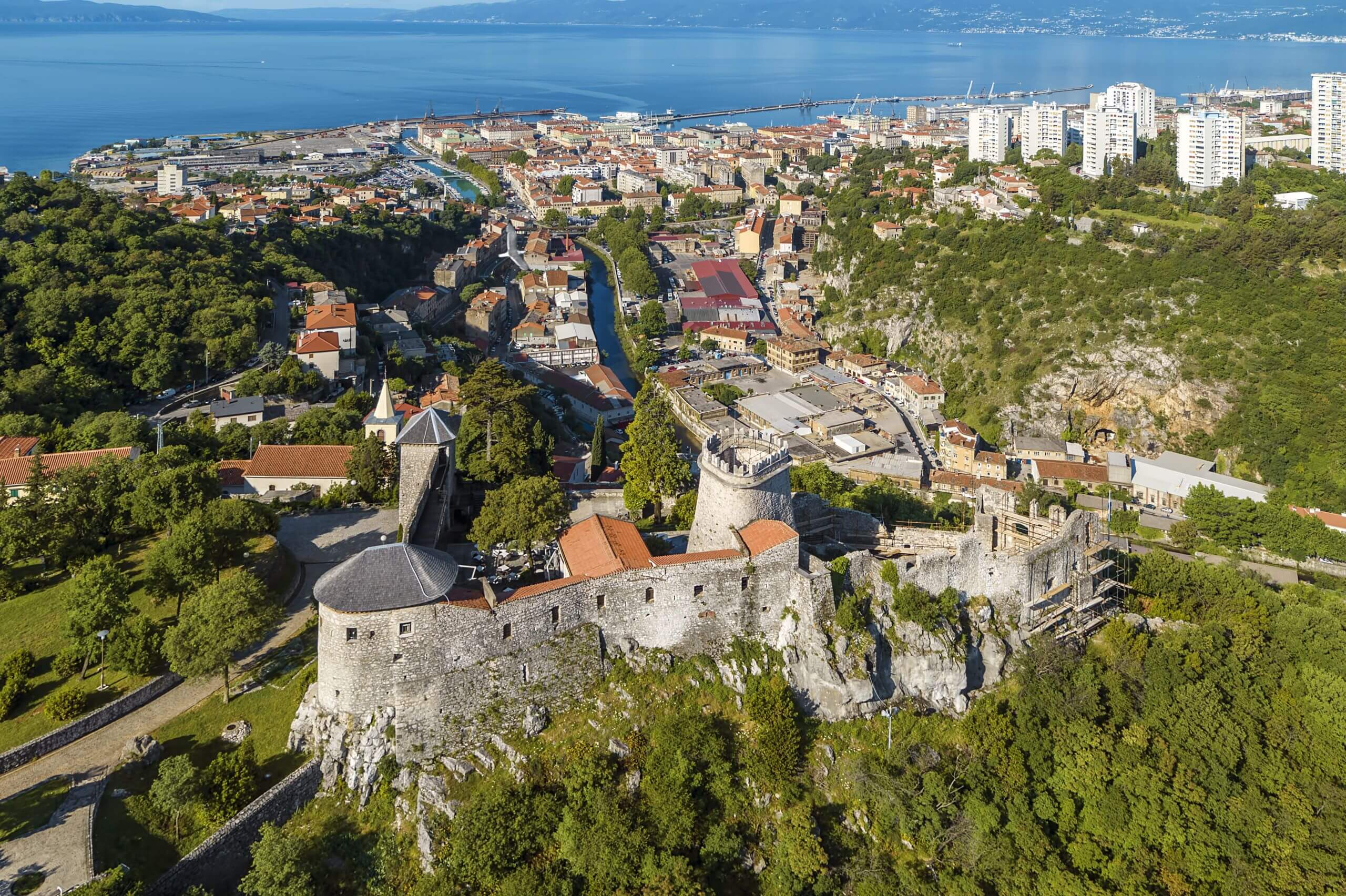
Image: Rijeka Tourist Board
Dubovac Castle in Karlovac
The Dubovac castle is one of the best-preserved and most beautiful monuments of feudal architecture in Croatia. It was built on a hill above the Kupa river and was named after an oak that grows on the surrounding slopes. It changed owners throughout history, changing its appearance depending on current needs and fashion, and got its present appearance after a complete reconstruction in the mid-20th century. It is not known exactly when did construction begin, but books say that it was finished during the 13th century.

Image: Karlovac Tourist Board
Trakošćan Castle
The Trakošćan castle was built at the end of the 13th century in the defense system of northwestern Croatia as a small observation post to monitor the road from Ptuj to the Bednjan valley. According to the legends, the Trakošćan castle got its name from the Thracian fortress, which allegedly existed in ancient times. Another surviving tradition says that it was named after the Drachenstein knights who ruled the area in the early Middle Ages. A museum with a permanent exhibition was founded in 1954.
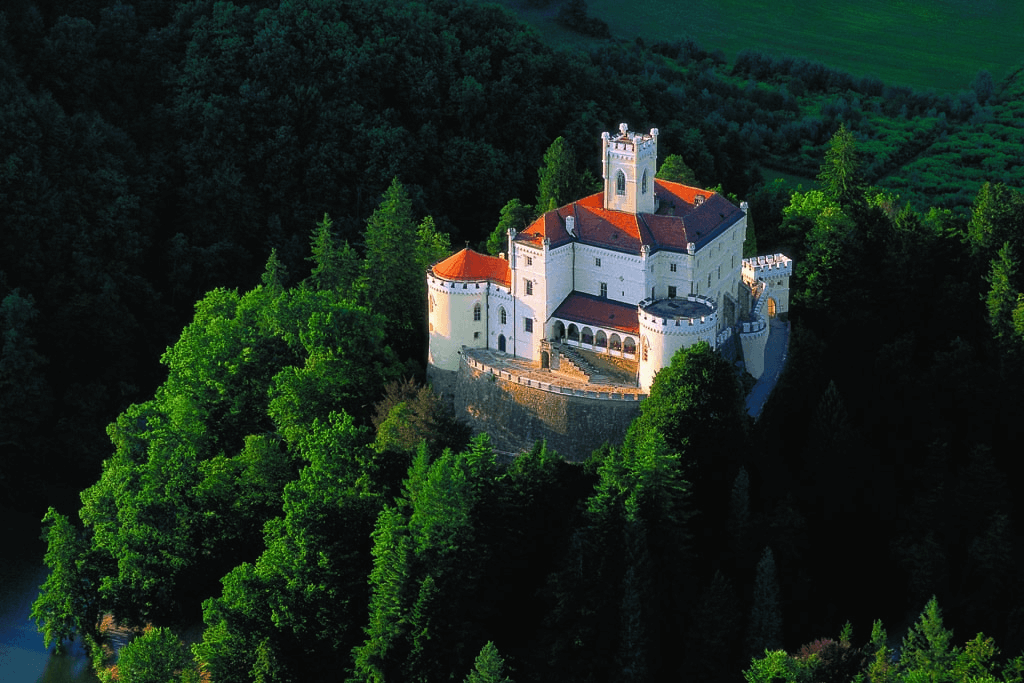
Image: Trakošćan
Varaždin's Old Town
Varaždin’s feudal fortress, known from ancient times as the Old Town, is undoubtedly the most significant historical building in the city. Unlike the royal free city that grew next to and around it, the fort was the heart of the noble estate, which was separate in terms of ownership and law. Disputes between its inhabitants with the citizens of Varaždin were frequent. The fort was built intermittently from the 14th to the 19th century, and its oldest part is the central tower adorned with Gothic benches and canopies, which is a rarity for this type of medieval plastic art in north Croatia.
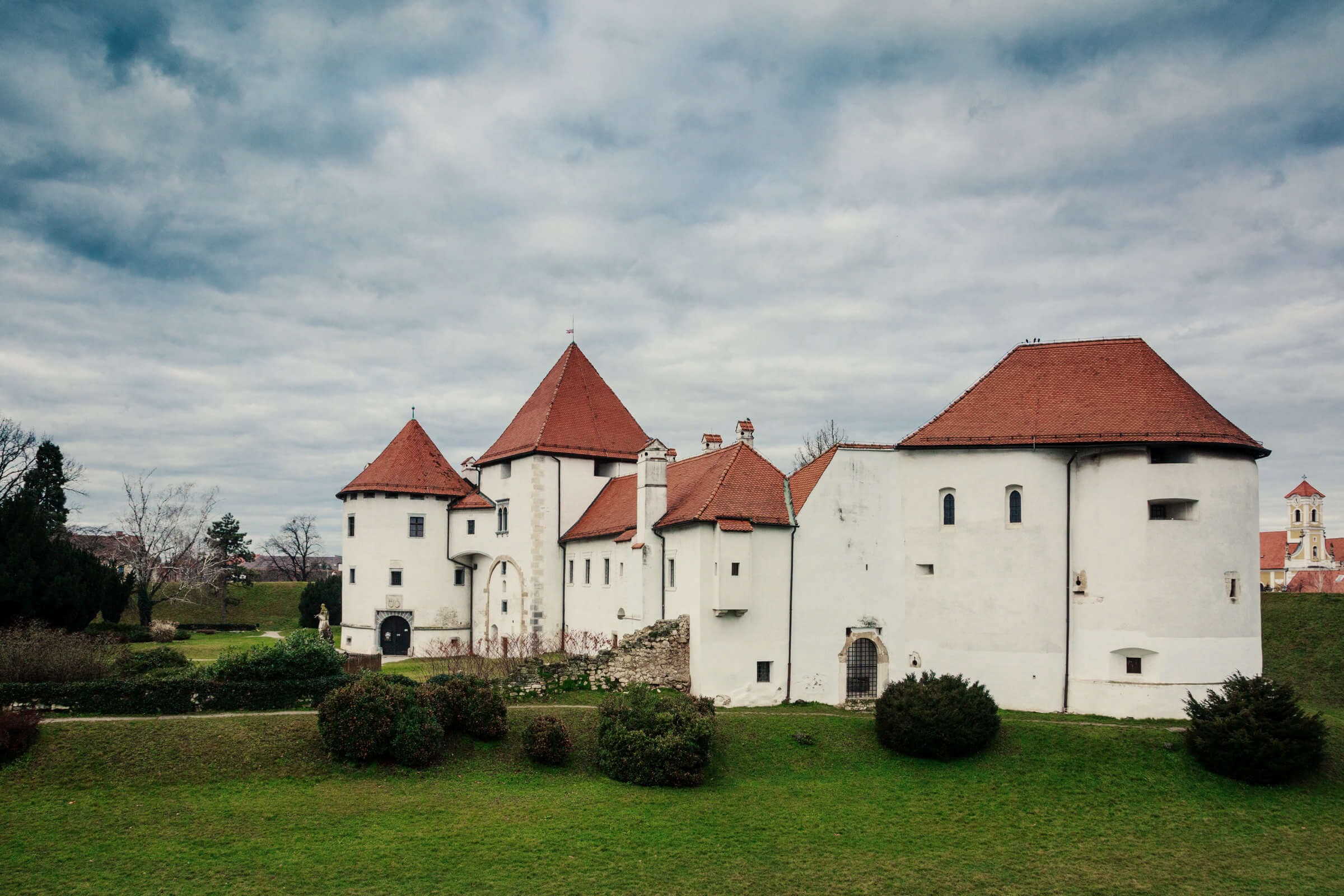
Photo: Mario Romulić
Medvedgrad in Zagreb
At the top of Medvednica, this picturesque medieval castle has been watching over Zagreb for eight centuries. It was built in 1254, after the catastrophic invasion of Tatars who had raided and devastated this area, burning and razing to the ground the two settlements which later became the city of Zagreb: the burgher’s Gradec and the bishop’s Kaptol. Even though magnificently fortified and always ready for battle, Medvedgrad was never attacked. In 2021, Medvedgrad was reopened to the public with a modern and interactive museum inside.
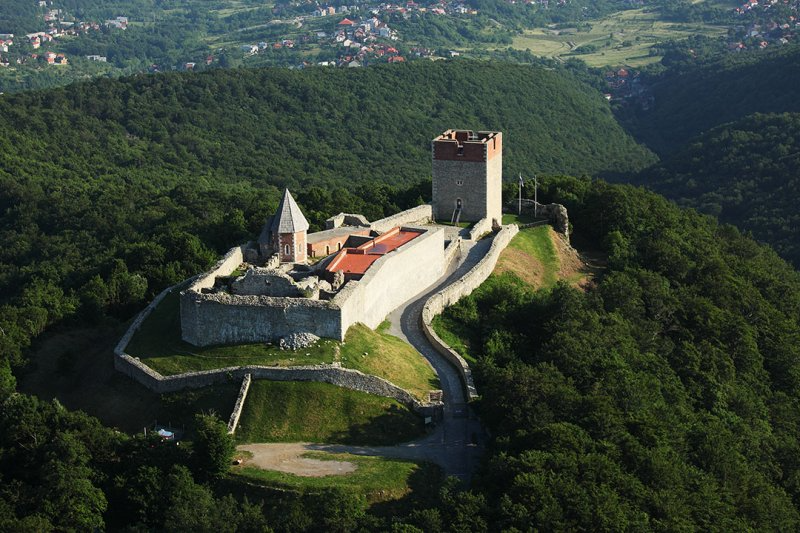
Image: Zagreb Tourist Board
St. Nicholas Fortress in Šibenik
The fortress of St. Nicholas, located at the entrance to the Channel of St. Ante in Šibenik, is a unique Venetian fortification. It was built on the island of Ljuljevac, on the site of the former Benedictine monastery of St. Nicholas, after whom it was named. The construction of the fortress, according to the project of the Venetian architect Gian Girolamo Sanmichelli, began in 1540 after the fall of the city of Skradin under Ottoman rule, when the Venetians had to strengthen the defense of Šibenik, its most important strategic port on the eastern Adriatic coast.

Image: Šibenik Tourist Board
Klis Fortress
Klis fortress was built on an extraordinary strategic location separating the mountains of Mosor and Kozjak that allowed military and commercial control over the whole Klis valley and the area of Salona and Split. Because of its importance, Klis was often referred to as the key to Dalmatia and the heart of the medieval Croatian kingdom. It was built as a small stronghold by the Illyrian tribe Dalmatae, then became a royal castle during feudal and medieval times, and lastly served as a major source of defense against the Ottoman advance.

Image: Jules Verne Times Two/Wikimedia Commons
For more on travel in Croatia, follow TCN's dedicated page.
Karlovac Aquatika Presents Aquarium Washing Robot
ZAGREB, 19 June 2022 - In the future a robot will replace divers in doing the work of cleaning the glass of the Aquatika aquarium in Karlovac after the aquarium's management purchased a robot that it will improve, speed up and simplify cleaning and thus reduce the costs.
The new equipment worth HRK 35,000 was presented on last Wednesday by Aquatika director Margarita Maruškić Kulaš, who explained that paying divers was expensive, dangerous and slow, which is why she expressed satisfaction with the purchase of a robot she believes will also arouse interest among visitors.
A call will be published soon on social networks for proposals to name the robot-washer.
Until now, aquarist Marin Jarnjak has been diving with oxygen tanks and cleaning the inside of the glass, which was an additional attraction at Aquatika.
Now he will rarely have to and most of the time the pool will be cleaned by remotely controlling the robotic cleaner.
"Most futurologists predict that in 20 years we will live in smart cities and smart apartments, which will be managed by artificial intelligence and will adapt the living space to the wishes and habits of the household and routine work will be done by robots, and people will do more sophisticated and creative work. Aquatika is following that path,” concluded Maruškić Kulaš.
For more, check out our lifestyle section.
Five Freshwater Destinations in Croatia for a Summer Dip
May 29, 2022 - While it may sound silly not to take advantage of the summer to enjoy the Adriatic Sea to the fullest, this time of year is ideal for visiting other destinations beyond the coast. In case you are far from the sea and need to take a dip, here are some freshwater destinations in Croatia to cool off!
Summer in Croatia is synonymous with turquoise waters, paradise islands, and sailboats. For many, if your vacation does not include any of these, then you are not enjoying the country as you should. I do not agree. Although visiting the Adriatic is essential, summer brings with it a wide variety of opportunities throughout the entire geography of Croatia. The parks and fields are filled with green and shade, perfect for hiding from the sun. Also, the number of events and festivities multiply considerably in central and eastern Croatia. Why would you miss any of this?
If you can, including central and eastern Croatia in your travel itinerary is a great idea. Zagreb and Osijek airports will also increase their routes and flights throughout, and after getting to know both cities and their surroundings, you can head to see what makes Croatia so famous: its coast and islands. But don't worry, we know that these regions of the country are no strangers to high temperatures, and you will surely want to take a dip before waiting to travel to the coast. If freshwater is also your thing, here are some non-beach destinations in Croatia where you can cool off.
Jarun lake, Zagreb
When temperatures rise to an unbearable point at this time of year, Lake Jarun becomes a haven of shade and fresh water for the inhabitants of the Croatian capital. Jarun Lake is a 2 km artificial body of water, surrounded by cycling paths, promenades, forests, and parks. It was built and opened in 1987 for the Universiade - World University Games. The lake is ideal not only for bathers, but for all those who practice activities such as rowing, kayaking, or paddling.

Jarun lake. (Image: Croatian National Tourist Board)
Drava river, Osijek
The Drava, the main river in Osijek, gives the city not only a beautiful appeal but also offers its inhabitants an ideal alternative when summer arrives and the Adriatic is so far away. One would think that it is the custom of only a few, but the banks of the Drava are filled with hundreds of people looking for a good dip even on weekdays. In addition to lying down to sunbathe, family and friends gather to play on the shores and have a picnic.
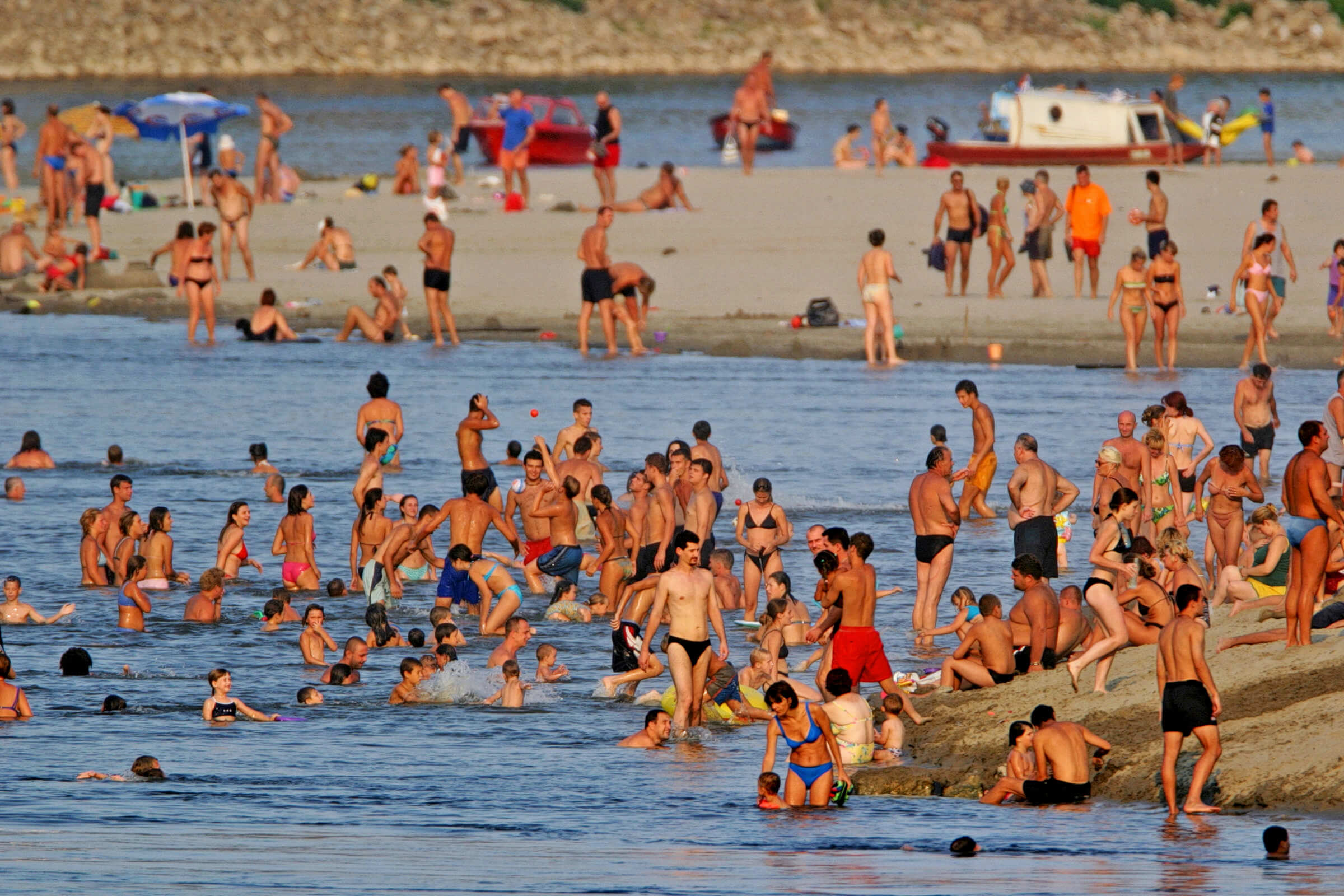
Drava river, Osijek. (Photo: Mario Romulić)
Foginovo kupalište, Karlovac
Foginovo kupalište is a river bathing area in the city of Karlovac, where its inhabitants cool off in the waters of the Korana river. From its source in Plitvice, the Korana river reaches Karlovac, offering for centuries an oasis of peace, nature, and freshwater to locals and visitors. Bathers enjoy not only fairly clean waters but can also do so in peace thanks to the lifeguards always nearby. It is definitely an ideal destination for everyone, as adults can sunbathe on the shores, while the younger ones enjoy the inflatables and the diving tower.
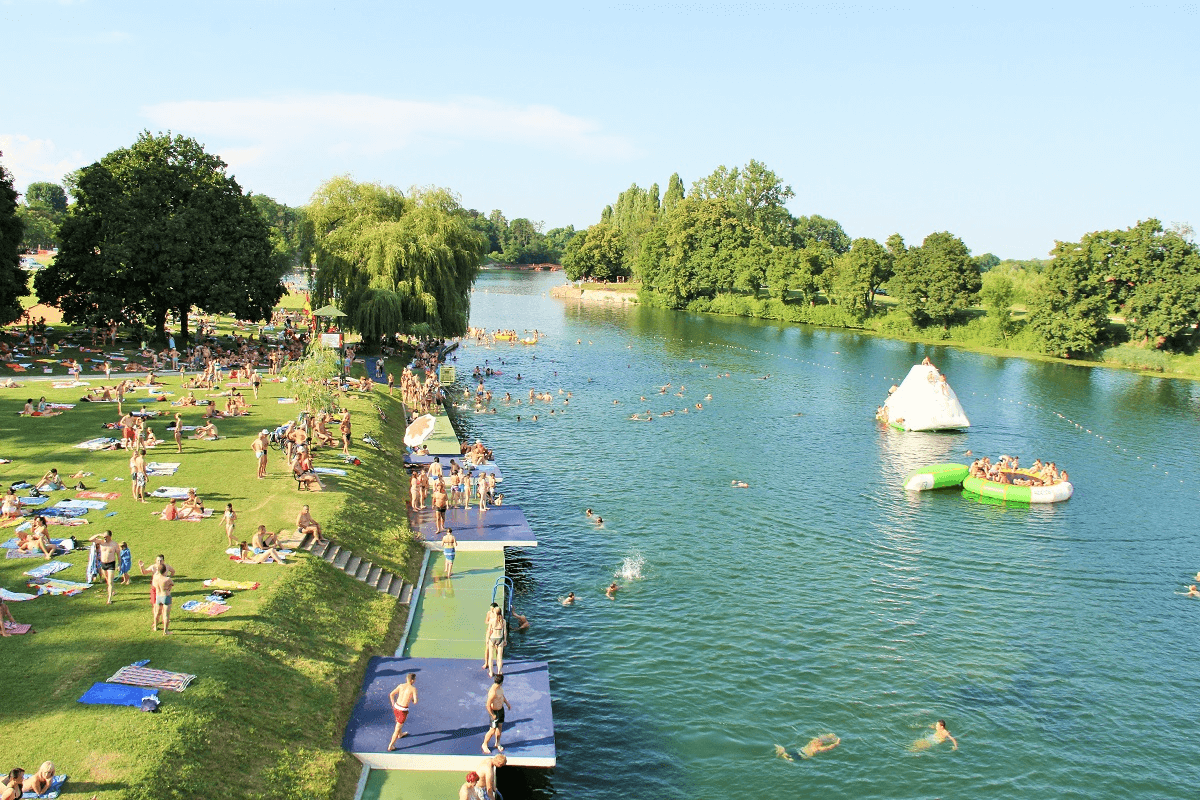
Foginovo kupalište, Karlovac. (Image: Zelenilo.hr)
Cetina river
The Cetina river is one of the largest and most important rivers in southern Croatia, rising from the Cetina spring to the east in Šibenik-Knin County, running through almost all of Dalmatia, and reaching the Adriatic Sea at Omiš. There are those who find the Cetina spring itself an ideal spot for a summer dip, but the entire river has numerous points to cool off. If you are in Omiš, encourage yourself to participate in activities such as kayaking, canoeing, or rafting, as many of the organizers include moments during the tours to take a good bath in freshwater after a good exercise.
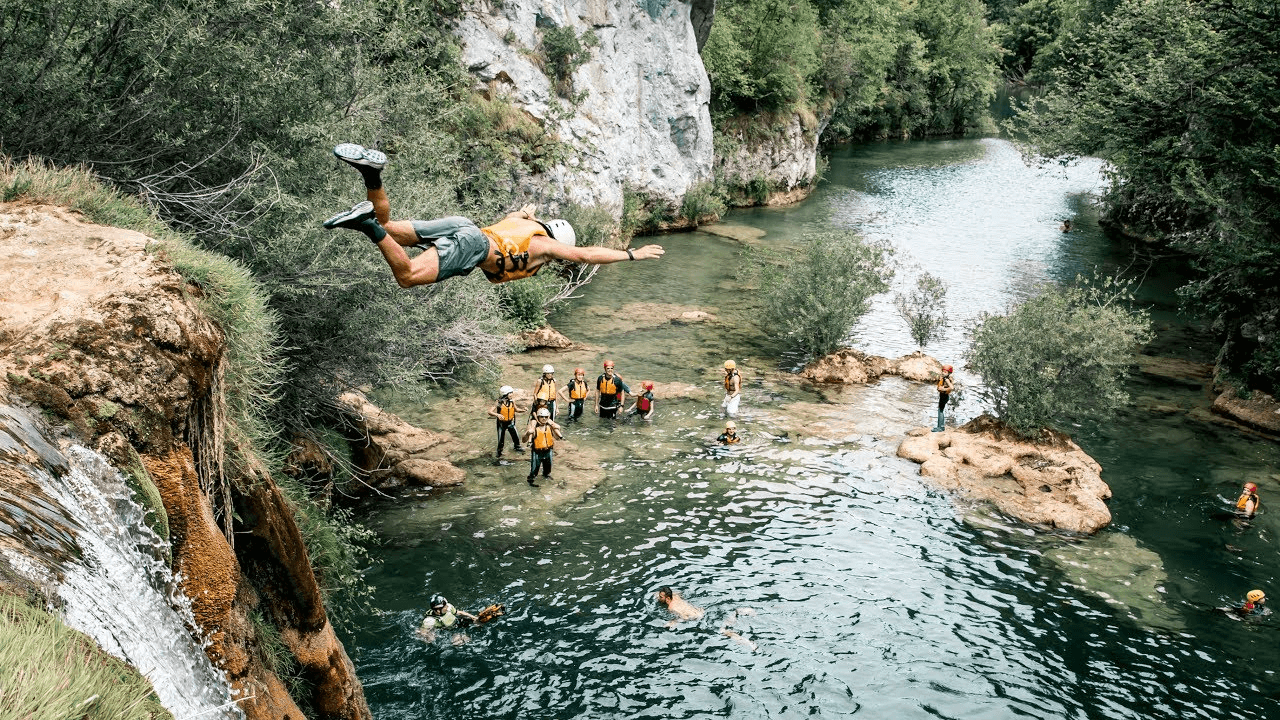
Cetina river. (Image: Mish and Kirk/YouTube Screenshot)
Modro jezero, Imotski
In Imotski, just an hour from Split by car, you will find not only a historic and quite picturesque town but also a group of lakes that are well-known in the country. One, in particular, Modro jezero, is an ideal bathing spot where high temperatures can easily be reached in these months of the year. Of all the alternatives mentioned above, Modro Jezero must be one of the most spectacular in terms of its location and scenery.
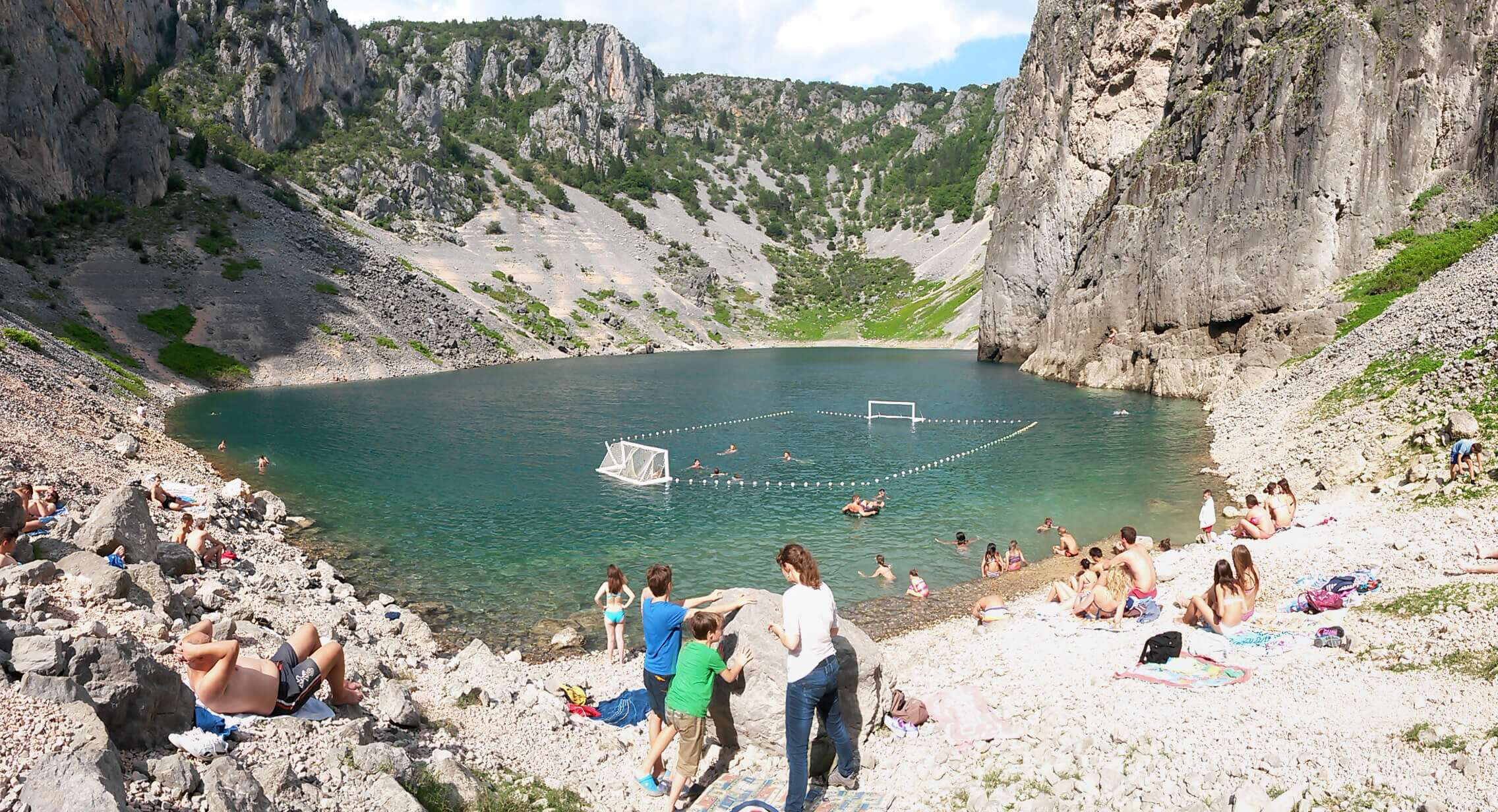
Modro jezero, Imotski. (Photo: Peter Malovrh/Flickr)
For more on travel in Croatia, follow TCN's dedicated page.
Karlovac Mayor Says Marking Victory Over Fascism Day For Sake of Victims, Not Victors
ZAGREB, 9 May 2022 - Leaders of Karlovac County and the City of Karlovac on Monday laid wreaths at the Jamadol cemetery, with Karlovac Mayor Damir Mandić saying that they commemorate the day for the sake of the victims and not the victors.
The office of the mayor, who is a member of the HDZ party, said that modern-day Croatia was founded on antifascism and the fight against all totalitarian regimes.
Mandić said that they were commemorating the millions of victims who in the 20th century paid with their lives during "the rampage of totalitarianism, Fascism, Ustashism and Communism."
"Commemorations like these are held for the sake of the victims, not the victors. Notably, if we remember that in communist countries the victory turned into a defeat because under the guise of antifascism and victory, freedom and democracy were abolished," said Mandić.
The office of Karlovac County head Martina Furdek Hajdin, also a member of the ruling HDZ party, said that she laid a wreath and lit a candle on Europe Day in memory of the victims of all totalitarian regimes.
"Unfortunately we are again witnessing a war in Europe, an aggression on Ukraine and the suffering of innocent victims, which even more underlines the importance of strengthening the values of democracy and unity in Europe," she said.
For more, check out our politics section.
Karlovac to Hold European Energy Award Certificate for Next 4 Years
April 3, 2022 - For the next four years, the City of Karlovac will proudly boast the European Energy Award certificate, chosen as the city with the best projects out of six Croatian cities that have received the certificate.
This is a European award for projects in the field of energy efficiency, i.e., a quality management and certification program dedicated to sustainable local climate and energy policy, reports Lokalni.Vecernji.hr.
"The European Energy Awards campaign has been running for more than ten years. Four years ago, REGEA was the national contact point for Croatia. We evaluated several Croatian cities that had to meet these relatively demanding European criteria.
The project was implemented in six European countries and involved more than 1,700 European cities and municipalities. The City of Karlovac had the best results from Croatian participants in that campaign, which I sincerely congratulate. Still, as the director of REGEA, I must admit that we are not particularly surprised given the excellent cooperation we have had all these years and that we see each other very often and collaborate on projects. This is an award given not only for implemented projects but also for thinking, planning, documenting plans, and preparing projects and specific investments in the area of Karlovac. The city of Karlovac is also successful in the preparatory part. Here I mention an idea such as one urban zone Luščić, defined as a zone without fossil energy sources. This is an example that does not exist from here to Vienna," said Julije Domac, Director of REGEA, Regional Energy Agency of Northwest Croatia, who presented the award to Karlovac Mayor Damir Mandic.
Mandic said that he was pleased that this award recognized the direction of Karlovac toward a completely green city.
"It is important to say that I read this concept of the City of Karlovac related to energy and our efforts to implement what is popularly called green today in all our projects and our businesses. Especially in planning the time to come, the so-called green future. First of all, it should be borne in mind that we, I am talking about the city administration, but also about all components of the work of the city administration, public institutions, schools, kindergartens, and even city companies, are aware of the fact that today it is our responsibility in what way and how some generations after us will live tomorrow. We are building that for them today through caring for the environment, energy efficiency, and green energy. The goal is for Karlovac to be a green city in that awareness of self-sustainability and green energy. Our goal is inspired by what Karlovac is today. Karlovac is a green city, a city of parks, so we intend to be an energy green city, a logical continuation of what makes our city today," said Damir Mandic.
For more, check out our dedicated lifestyle section.
CROMADS in April: Visit Croatia's $6bn Airbase, 18th Century Grain Ship Cruise
April 1, 2022 - Looking to explore the real Croatia on the road less travelled? The Zagreb CROMADS Travel Club takes you back to the 18th century on the Kupa River and inside an incredible US$6 BILLION secret airbase.
After almost 20 years in Croatia, and just when I thought I knew most of its many impressive secrets, I realised that I knew very little at all.
Our new CROMADS platform, showcasing authentic Croatia, 365 days a year all over the country, has been a huge voyage of discovery into the road less travelled in this beautiful land.
Ever since the first event for the CROMADS Travel Club (you can sign up here), the quite incredible GINcredible gin education and tasting, the concept of a travel club offering unique and authentic experiences that are hard to find elsewhere has got me very excited. And if you are in Zagreb, that fun is set to continue next week, with two great tours showcasing parts of Croatian history that few know about.
Did you know, for example, that Croatia has a secret airbase with 5 runways built into a mountain, whose construction costs were estimated at US$6 BILLION? One of the most far-out things I have seen on Planet Earth.

But we start on Tuesday, April 5, with something a little more tranquil and historic - a wonderful day in nature aboard a replica grain ship on the River Kupa. A journey back in time, surrounded by idyllic nature, experiencing aspects of Croatia as it really once was. You can learn more here or check out the tour highlights below.
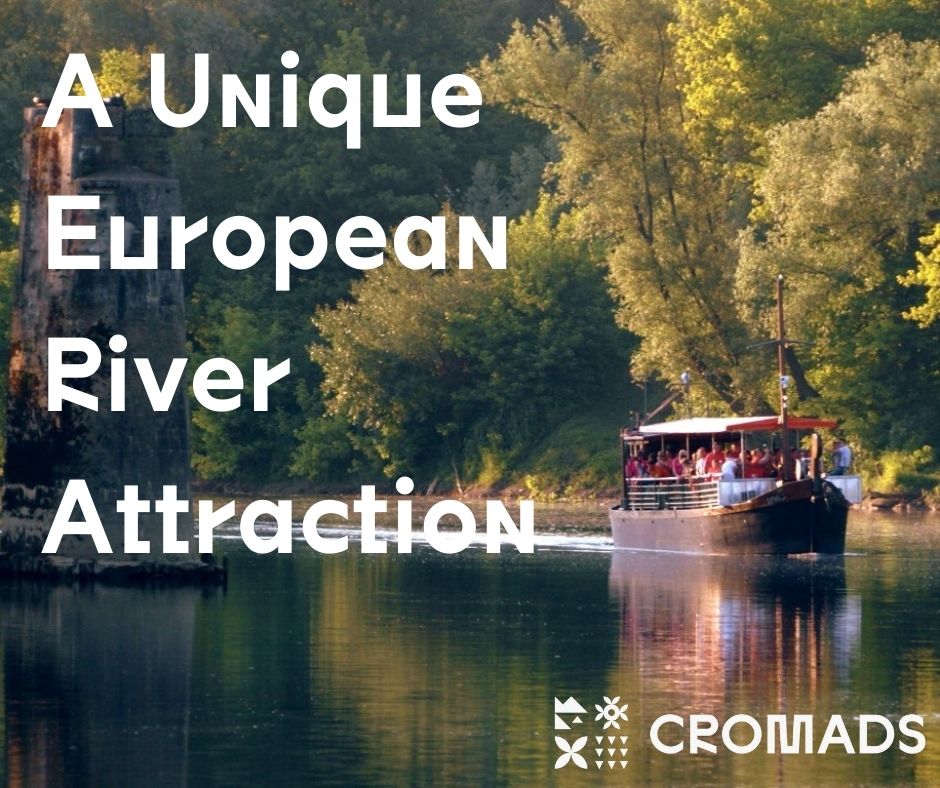
⚓ AURORA BOAT EXPERIENCE
5th of April (Tuesday)
⏰ 15.30h -19.00h
Meet in front of Ethnographic Museum Zagreb
*Welcome On Board Žitna lađa - Karlovac *
Let us take you out of the city and on a unique European tour down the Kupa river onboard “Zora” – a replica of the 18th-century grain boat.
PRICE: 40,00€/per person
✅Private 2- way transfer
✅Private tour guide
✅Private 90min boat ride on Kupa river
✅Finger food, homemade cakes, liquor tasting and two glasses of local wine
Limited spots so book yours at
This email address is being protected from spambots. You need JavaScript enabled to view it.
And for something really far out, the following day has us heading to the Croatian border with Bosnia to visit surely Tito's most unbelievable project - a huge military airbase built inside a mountain, located mostly in Croatia but also in BiH, capable of housing up to 80 MiG fighters. An airbase that was fully operational until 30 years ago. Learn more about the spectacular Zeljava Airbase. While Zeljava is the highlight, there is plenty more included in this fascinating day, including Tito's view of Plitvice Lakes from his former villa. Check out the itinerary below, and contact CROMADS partners, Swanky Travel, to book.
A UNIQUE day tour to places you did not know exist.
Turbulent Croatian history has left a huge heritage behind including some amazing places that are abandoned.
1. The biggest and best kept secret project of ex-Yugoslavia stands today as a reminder of some different times - Zeljava underground airbase.
2. Another amazing location is Villa Izvor - one of the residences of former Yugo president Tito situated just above the source of Plitvice lakes.
URBEX TOUR
6th of April (Tuesday)
⏰ 8.00h - 20.00h
Meet at Swanky Mint
PRICE: 75,00€/per person
*private small group tour
✅Private 2- way transfer
✅Private tour guide (urbex expert)
✅Željava underground airbase visit
✅ Abandoned Villa Izvor visit
✅ Flashlights for underground exploration
✅ Tickets for Museum of Homeland war
After the Ston Oyster Festival and a 3-tour day in Imotski, the CROMADS Split Travel Club will be back shortly with more authentic experiences in a couple of weeks. Stay tunes, or better still, join the CROMADS Travel Club and be the first to hear about the news. Or follow CROMADS on Facebook.


